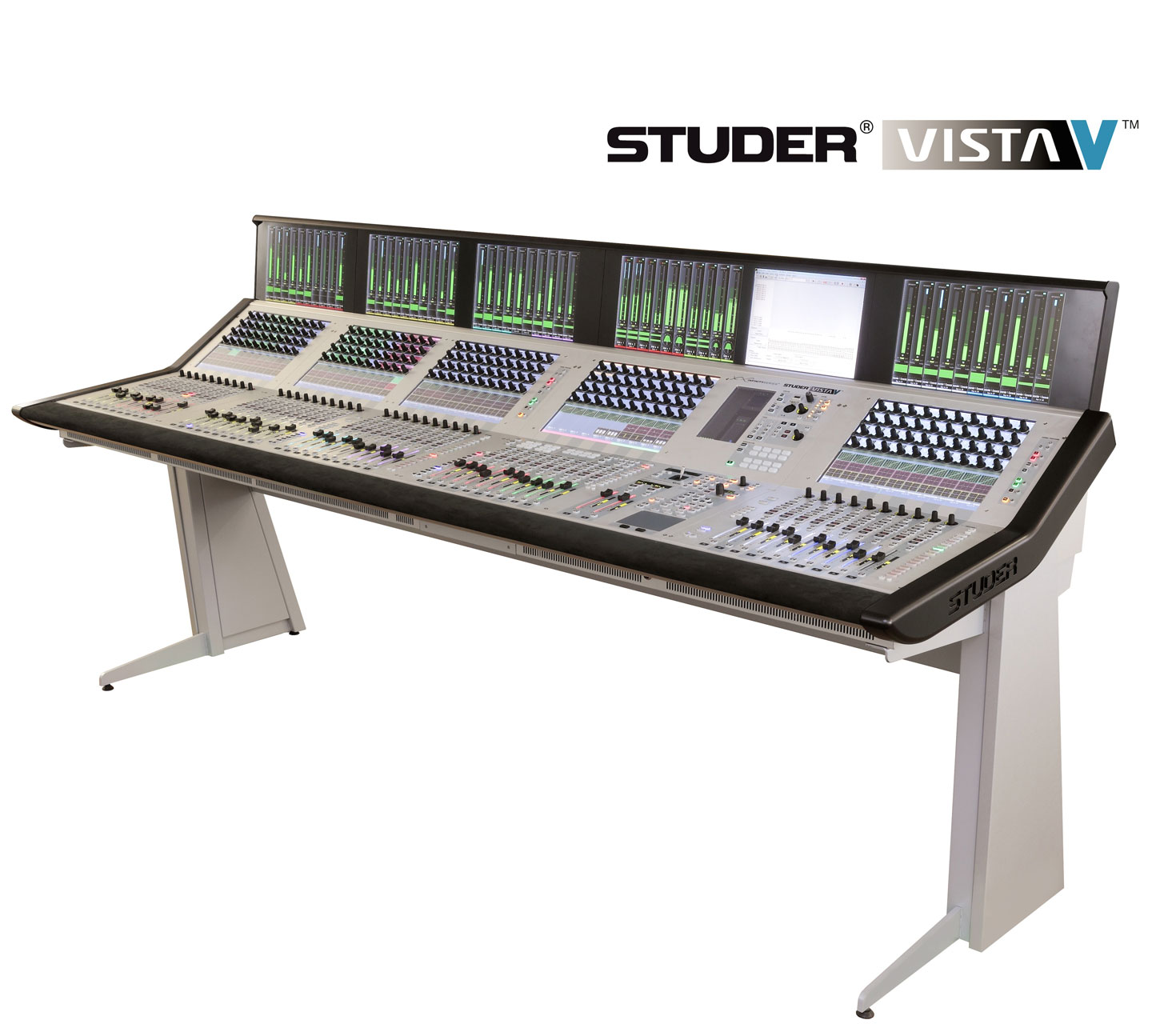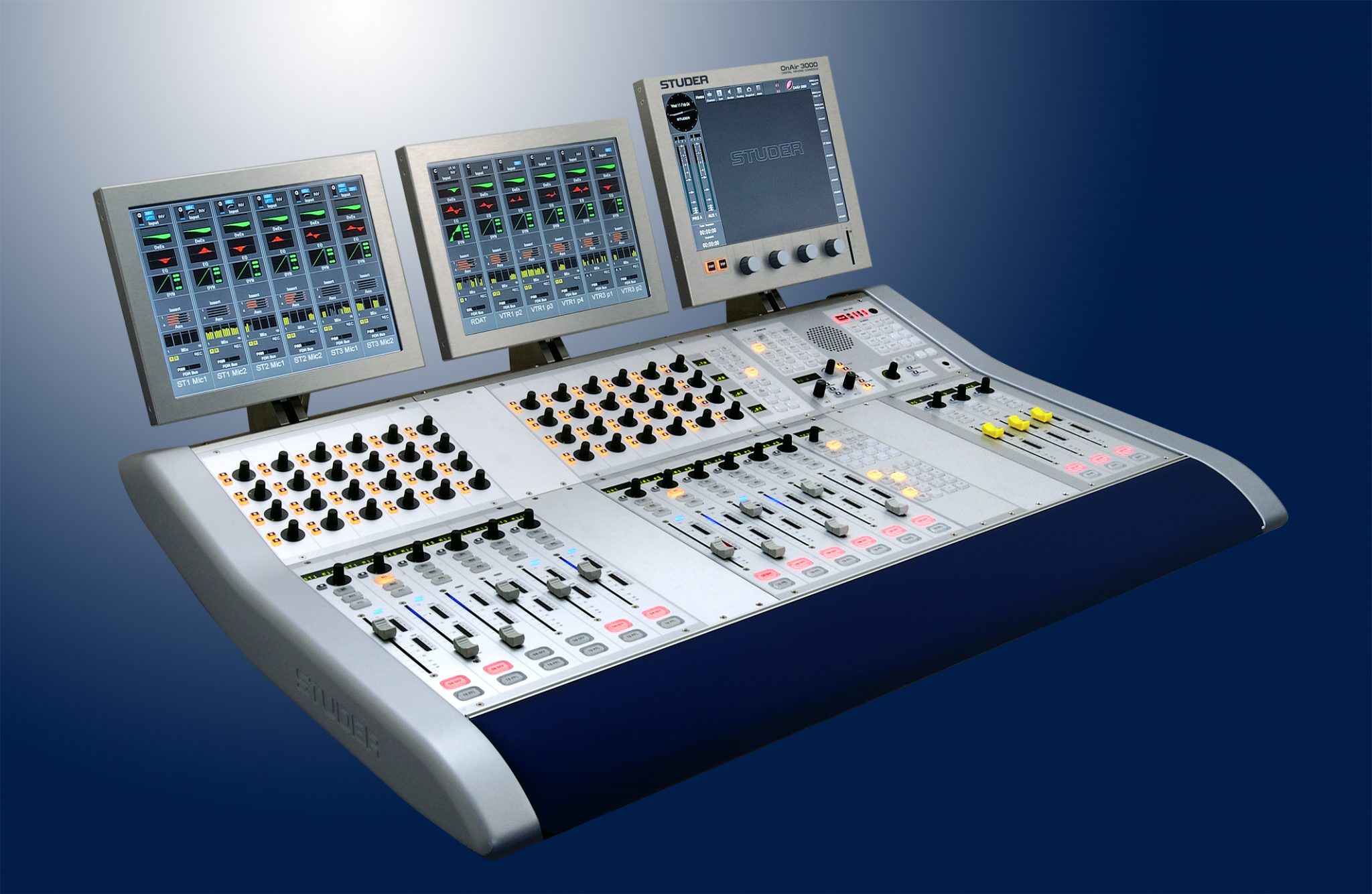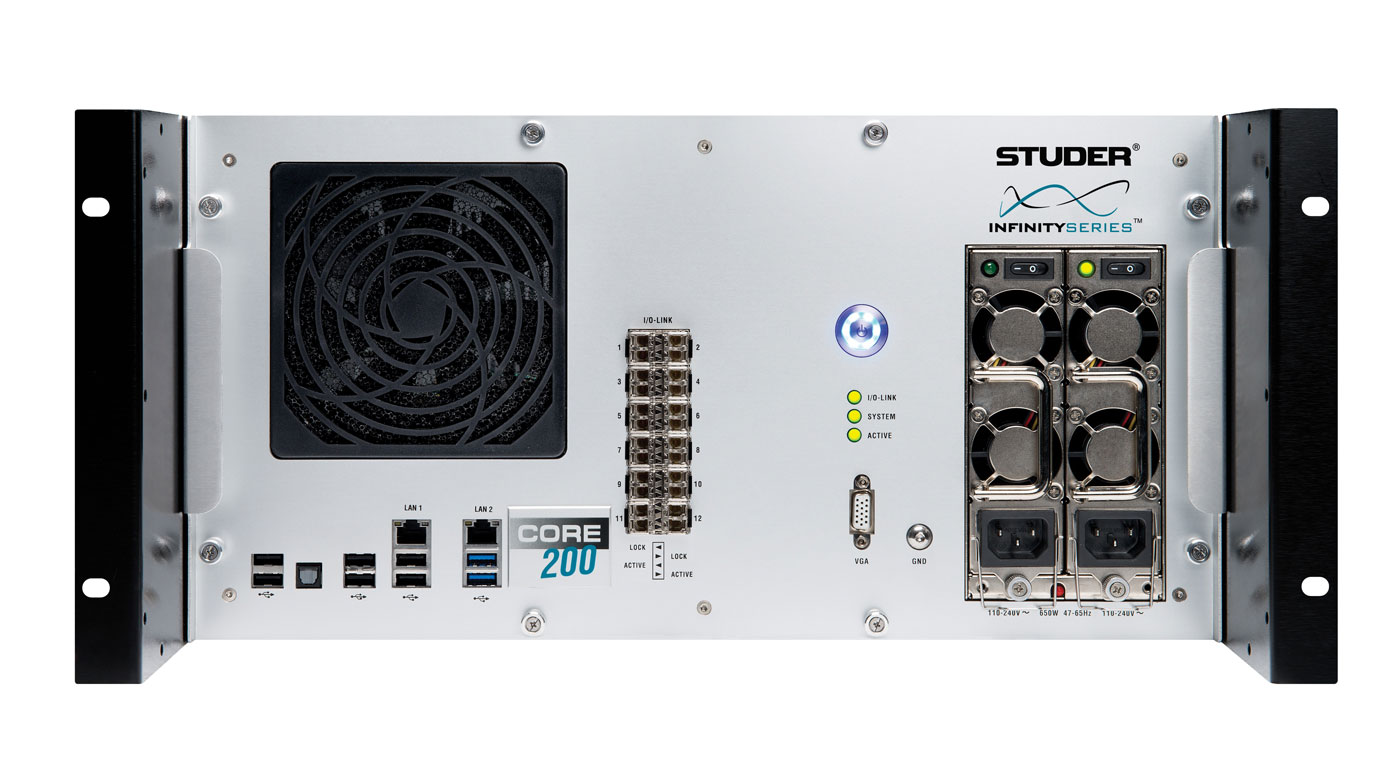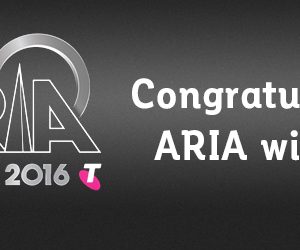
TO INFINITY AND BEYOND

Long before the Beatles recorded Sgt Pepper on the old Studer J37 four track, Harman’s Studer consoles have been the centrepiece in music and broadcast studios for decades. Which makes the recent announcement of software updates and a new processing engine, good news for so many.
The updates are the v5.2 for the Vista X, Vista V, Vista 1 and Vista 5 M3 digital consoles and the v6.1 software for the Studer OnAir digital mixing consoles. The company has also introduced its new Infinity 200 processing engine, for the Vista X, but we’ll discuss that later in the article.
V5.2 for Vista Features
The new update includes, the ability to assign Strip Setups as Cue events; support of the Soundcraft Realtime Rack (UAD plug-ins); support of Lexicon PCM96 Surround reverbs with Infinity Core; Input Gain unfold for multi-format channels; Spill Zone for contributing channels; GUI enhancements and new patch groups; A-Line embedded Ethernet; and contribution Pan in stereo channels to mono Aux busses.
Saved Strip Setups can be assigned as Cue Events in the cue List. Recalling cues that have these events assigned, will automatically load the specified Strip Setup onto the desk’s surface. This feature will help users who are mixing in a “scene”-based workflow, like those applied in theatres and pre-programmed shows. Loading the cues for the next scene will also bring the currently needed channels onto the surface.
Up to four Soundcraft Realtime Racks, loaded with Universal Audio (UAD) Plug-Ins, can now be connected to every Vista system. All plug-in parameters are saved and recalled by Cue events. The cue events are also organized in a library and can be re-used, individual cue events can be enabled and disabled, and updated at any time.
Vista FX reverb is now also available for Vista X and Vista V running on Infinity Cores. Up to six (in pairs of two) original Lexicon PCM96 Surround reverb units can be connected over AES/EBU. Parameter control works over Harman HiQnet directly from the mixer’s Vistonics user interface.
In addition, stereo and 5.1 input channels will have individual digital input gain parameters for each channel leg. Pressing the button next to the ‘Main’ digital input gain Vistonics rotary will flip the input page into a view, where individual digital input gain parameters (L, R, C, LFE, Ls, Rs) are accessible.
A user-definable ‘Spill Zone’, on top of the desk’s active fader layer, will show channels and their busses. Pressing the Contribution button of any bus in the control bay will line up all channels in the Spill Zone, that contribute to this bus, allowing full processing parameter access to these channels. The user can define the size, position and spill direction (of the Spill Zone) at any time from the Strip Setup page.
The new User GUI has been updated with a Ribbon Bar, giving easier access for the operator. New user-definable Patch Groups, with filtering options and customizable Source and Target views have been added, to help organise and control channels. In stereo channels, all paths to mono Aux busses now have a Pan control before the mix-down to mono, sending a user-defined mix of the stereo channel to the mono Aux bus.
For Infinity Core with D23m, the Ethernet control signal can be tunnelled (with the audio stream) from the CoreLink card through the A-Link ports to the D23m’s HD cards. Meaning no additional Ethernet cable need be connected to the D23m’s Ethernet card anymore (although this option is still available).

OnAir v6.1
The new update offers loudness metering; delay function; improved AoIP support with Dante; automated gain calibration; and BSS BLU link support.
The update includes loudness metering as an added option for the main screen of OnAir 3000 digital mixing consoles. It offers EBU R128, ITU-R BS.1770-3/1771-1 compliant loudness metering, covering single-channel and summing bar graphs, loudness range (integrated value, short term, momentary), true peak and numeric views. The physical presentation of both loudness (R128) and peak-programme metering is software-based and emulates a twin-indicator meter display.
The delay function is an option for OnAir 1500, OnAir 2500 and OnAir 3000 consoles, according to available DSP processing. It offers up to five seconds each. Summing bus delay for all master channels include an pre-delayed output to be used for output routing and monitoring. It is configurable as mono/stereo/surround in the OnAir Config Tool. The OnAir 1500 has stereo delay of 400ms on program bus.
The update also supports the Studer D21m Dante interface providing, Dante 64 I/Os, allowing the connection of the OnAir console into a Dante network with the Dante interface and operation of the mixing desk via other Dante devices.
This release also brings automated gain calibration for mic input sources and introduces support for the Studer D21m BLU link card. Which is a 32 x 32 interface between a console and the Soundweb London digital audio bus, informally known as BLU link. The card allows connection to a variety of Harman products (equipped with BLU link).

Infinity 200 Processing Engine
The Infinity 200 is designed for smaller facilities that require lower channel counts and full system redundancy and offers the same benefits of the original Infinity DSP Core, found in the Vista X console (introduced earlier this year). The new processing engine enables up to 200 audio channels to be processed in a single CPU-based board.
It also features Studer A-Link high-capacity fiber digital audio interfaces, and D23m I/O frames are used to break out these A-Link connections to standard analog, digital, Audio over IP (AoIP) and video interfaces. The A-Link interface also provides direct connection to the Riedel MediorNet distributed router, allowing other Infinity systems to be connected together via router capacities of 10,000 square or more.
Excerpts from PR
















RESPONSES